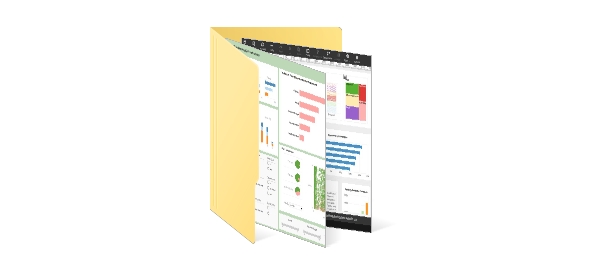Data Management Implementation Strategies
This is the continuation of the transcript of a Webinar hosted by InetSoft on the topic of "Data Management Implementation" The speaker is Mark Flaherty, CMO at InetSoft.
Flaherty: There are various data management implementation strategies, a full blown implementation and a phased or staggered approach. Let’s talk about the advantages and disadvantages of each of those.
Let’s consider two different hospitals for a moment. One is a simple single site hospital with maybe 2,000 employees, and then at the other end of the spectrum you have a hospital with 10 different individual hospitals. So it’s really a hospital system. It is very difficult to implement a new enterprise system across the board at all 10 hospitals concurrently.
The project would be just really massive in scope. In that type of scenario, it tends to be very common for the senior management at the hospital system to pick two or three at a time and do them in phases. Conversely if you have a very small hospital system or a single site hospital, you tend to have to go for it all at once. In other words, you are not going to implement payroll or financials for half of the organization but rather get everyone around a new payroll system.
Get Rid of External Expensive Consultants
In terms of advantages, if you are doing two or three at a time at a 10 hospital system, the project is expected to take longer. But your internal team will learn how to do these things. This will present an opportunity to get rid of external expensive consultants.
On the flip side, different hospitals might have different rules. Different rules involve a lot of coordination. People might have to travel down there and might not have signed up for that. Additionally, having to be away from home for three to four months can be daunting and might not jive with what they want they do as part of their job. In these cases, consultants have an idea of what they get themselves into in terms of travel and responsibility.
So, there are definitely pros and cons for each one. Another aspect to think about is that you don't need to implement the whole kit and caboodle at once. In other words, most enterprise systems are what they would call modular. If they don't want to implement a grant management tracker to track when they are receiving grants from the government and how those grants are being spent, it doesn't have to be done in phase one, but could be done in phase two or phase three.
In this sense, it’s not all or nothing. It’s not a binary solution. If for whatever reason you are running behind, and you don’t want to bite off more than you can chew on, then you can always just do the core or central modules first like GL, procurement, or payroll.
Also, if something like tracking employees’ vacation balances through absence management doesn’t make the cut, then this may not be ideal, but you can do that in spreadsheets or access databases for six months until the organization is ready to go forward with that.
InetSoft’s remote engineers provide invaluable expertise for companies implementing data management solutions using the Style Intelligence (StyleBI) platform, particularly for organizations with complex or fragmented data environments. These engineers assist in integrating disparate data sources, such as ERP systems, IoT feeds, and cloud-based APIs, into StyleBI’s Data Block technology, ensuring seamless data mashups without requiring extensive in-house coding expertise. For example, a logistics company struggling to consolidate shipment data from multiple regional databases can rely on InetSoft’s engineers to configure connectors and automate data cleansing, reducing implementation time by up to 50% and enabling real-time dashboards for tracking delivery performance.
Beyond technical setup, InetSoft’s remote engineers offer tailored support for governance, scalability, and user adoption, addressing common data management challenges. They work closely with clients to establish role-based access controls and data lineage tracking, ensuring compliance with regulations like GDPR while maintaining data security. For a retail chain, engineers might optimize StyleBI’s serverless architecture to handle peak sales data, provide training for non-technical staff to create self-service dashboards, and offer ongoing remote support to troubleshoot issues, ensuring smooth operation and empowering teams to leverage data effectively for decision-making.


